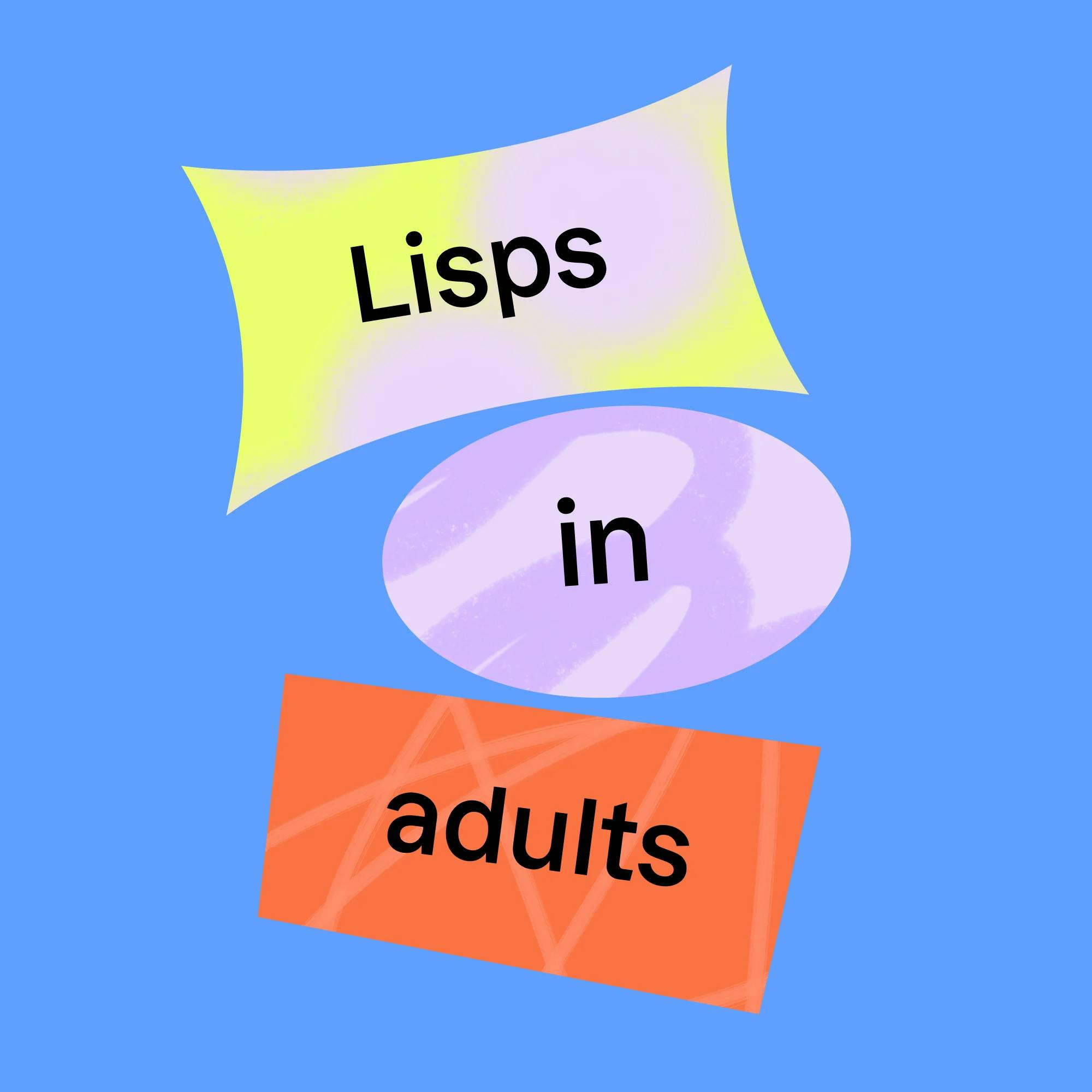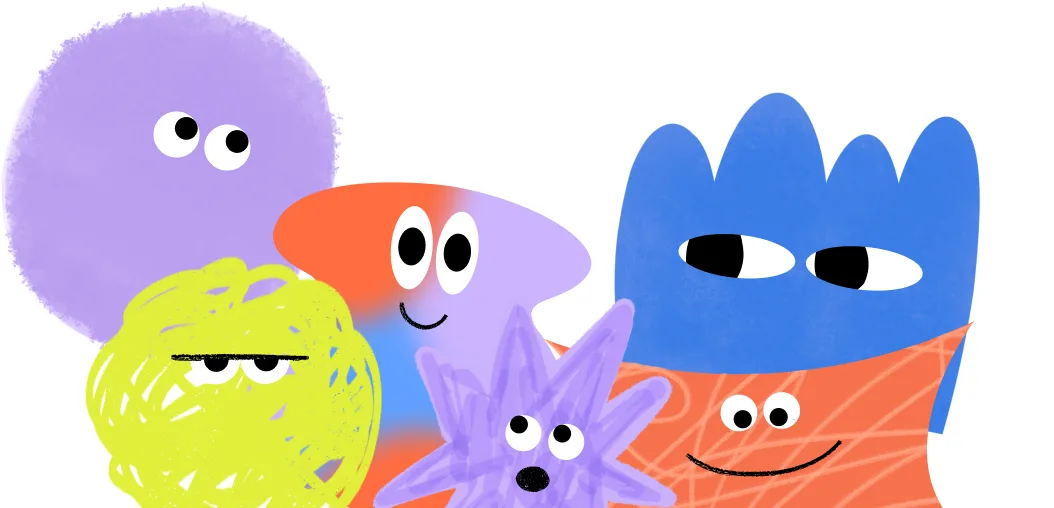
The 4 Different Types of Lisps and How to Correct Them
 Leanne Sherred, M.S., CCC-SLP
Leanne Sherred, M.S., CCC-SLP
Lisps are one of the more well-known speech issues. Lisping with the /s/ and /z/ sounds is very common in young children. If not corrected at an early age, lisping can continue into adulthood.
Did you know there are actually four types of lisps? Each type of lisp has distinct characteristics. In this article, we explain the four types of lisps, what they sound like, and what you can do to fix a lisp.
Find the right speech therapist for you
We'll match you with a speech therapist who's experienced in your area of need and available when you are.
 Get started
Get startedWhat is a lisp?
A lisp refers to difficulty pronouncing the /s/ or /z/ sounds. This is because of an incorrect motor pattern of tongue positioning.
When a person has a lisp, they position their tongue in a way that blocks or distorts the airflow needed to make the /s/ and /z/ sounds. This distortion of airflow creates the lisping sound we are familiar with.
What causes a lisp?
The reason for the incorrect tongue positioning that causes a lisp isn’t always clear. Lisping can be caused by a variety of factors, including:
Learning to produce the /s/ and /z/ sounds incorrectly as a child
A jaw misalignment, or problems with a person’s jaw alignment
A tongue tie, which occurs when the tongue is attached to the bottom of the mouth and its movement is limited; this may lead to a lateral lisp
A tongue thrust, in which the tongue protrudes forward; this can also impact feeding and swallowing


The 4 different types of lisps and tips to correct them
Now let’s talk about the different types of lisps. We’ll provide a quick overview of each, along with some exercises you can do at home to fix a lisp.
1. Interdental lisp
An interdental lisp, sometimes called a frontal lisp, is the most commonly recognized production of a lisp. This is where a [th] sound is produced instead of an /s/ or /z/ sound. If you or your child has an interdental lisp, words like “sing” may be pronounced as “thing,” and words like “zebra” may be pronounced as “thebra.”
It's called an interdental lisp because the tongue is placed incorrectly in the speaker’s mouth, often protruding between the front teeth.
Tips for correcting an interdental lisp
Since interdental lisps are caused by incorrect tongue placement, they’re easy to visualize. This can be helpful when trying to correct this type of lisp. For example, when looking in a mirror, it’s often easy to see the tongue protruding between the two front teeth. If you or a loved one is trying to fix an interdental lisp, use this to your advantage and practice in front of a mirror!
The tongue should go behind the front teeth. It should barely touch the “bumpy part” of the mouth right behind your teeth, also called the alveolar ridge. When the tongue is in the correct position and you begin to push air gently out, the air should flow smoothly right over the tongue and out the front of your mouth.
For quick practice, work with your child in front of the mirror. Watch closely how their teeth and mouth move when saying the /s/ or /z/ sound.
If your child has an interdental lisp, demonstrate the correct placement yourself. See if they can imitate your mouth movements. This can be helpful for anyone, especially those of us who are more visual learners.

2. Dentalized lisp
A dentalized lisp is similar to the interdental lisp. While the tongue doesn’t completely protrude between the front teeth, it does push against the back of the front teeth, directing airflow forward. This can cause a muffled sound when speaking.
Tips for correcting a dentalized lisp
To help fix a dentalized lisp, focus on making the tongue only lightly touch behind the front teeth, instead of pushing hard against them.
One simple exercise for a dentalized lisp is called the exploding /t/ technique. To begin, say the /t/ sound four times in a row, and then hold the sound on the last one. It will go something like: t-t-t-tsssssss. The /t/ will automatically turn into an /s/ sound. Pretty cool, huh? Try another with just one exploding /t/: t-ssss.
Then, try to produce the /s/ sound while maintaining that same placement. It will sound correct because the tongue is now in the correct position.

3. Lateral lisp
A lateral lisp makes a very distinguishable sound once you know what to listen for. In this production, the tongue stays in a relatively correct position; however, the sides of the tongue are raised enough to cause air to escape from either side of the mouth. All of this extra air causes the speaker to sound “slushy,” and speech takes on a uniquely “wet” or “spitty” characteristic. In fact, you may even hear a lateral lisp referred to as the “slushy lisp.”
Tips for correcting a lateral lisp
If you think that you or your child has a lateral lisp, you can once again try practicing the exploding /t/ technique. This will help position the tongue correctly so that airflow is directed out of the front of the mouth.
You can also use a straw and hold it in front of the teeth. Try to make the air come through the straw instead of out the sides of the tongue. You’ll quickly notice the difference, as the sound varies considerably depending on where the airflow is directed. This activity also provides quick feedback so that the speaker can continue working on their /s/ or /z/ productions.

4. Palatal lisp
A palatal lisp occurs when the tongue raises up and touches the roof of the mouth, also called the soft palate. While this type of lisp is not as common, it can make it hard to pronounce the /s/ and /z/ sounds.
Tips for correcting a palatal lisp
In order to fix this type of lisp, it's important to review appropriate tongue placement.
You may also need to focus on lowering the tongue slightly so that the body of the tongue is not raised as high when speaking.
It's common for a person with a palatal lisp to keep their mouth slightly open during their sound productions. If so, have them watch their tongue placement in the mirror. Model correct tongue placement, so that the tip of the tongue only touches slightly behind the teeth, and the body of the tongue is positioned lower in the mouth instead of touching the palate.

When should a lisp be corrected?
There are a few things to think about before deciding if it’s time to correct an /s/ or /z/ sound.
1 How old is the person with the lisp?
When children first begin talking, often around the age of 2, lisps can start to become noticeable. While learning to make the /s/ sound clearly can occur anywhere between ages 3 and 8, it’s a good idea to start working on this sound before age 8. If a child is able to produce an /s/ sound that's close to correct, it's a safe bet that they're ready to begin practicing this sound.
Keep in mind that a lisp can be corrected in adults, too. It’s never too late for speech therapy!
2 What type of lisp does the person have?
Dentalized and interdental lisps are relatively common and normal for early language learners. Many children have this kind of lisp up to around 4½ years of age. Lateral and palatal lisps, however, do not occur as a normal part of speech development.
Either way, it’s a good idea to consult with a speech-language pathologist, who can evaluate and identify the type of lisp that you or your child may be experiencing. They can provide a clinical recommendation on how best to remediate the lisp.
3 Is the lisp affecting the person’s confidence or self-esteem?
Finally, it’s important to consider the social and emotional toll that lisps can have on a person’s well being. Speech sound differences or disorders that affect a person’s intelligibility may impact their confidence, self-esteem, and willingness to participate and socialize with others.
Lisping affects everyone differently, and not everyone wants to change the way they speak. However, it’s important to be aware of how a lisp might be affecting you or your child.
When to see a speech therapist for a lisp
If you think that you or your child have a lisp, or you notice your child struggling with their /s/ and /z/ sounds with little improvement over time, contact a speech therapist. Their professional guidance will help you make the most informed treatment decision.
At Expressable, we’re here to listen to your speech concerns and guide you on next steps. We can match you with a licensed speech therapist who can perform an evaluation and develop a treatment plan. Get in touch with us here!
FAQs about lisping
1. What causes a lisp? Lisps can be caused by incorrectly learning how to say the /s/ and /z/ sounds as a child. A lisp can also be caused by a jaw misalignment, tongue tie, or tongue thrust.
2. What are the different types of lisps? The four types of lisps are an interdental lisp, a dentalized lisp, a lateral lisp, and a palatal lisp. Each has a different incorrect sound production. If you think you might have a lisp but you aren't sure, contact a speech therapist for an evaluation. 3. Can I fix a lisp on my own? You can practices exercises to fix a lisp at home. But speech therapists are uniquely trained to identify and treat articulation disorders like a lisp. Without the guidance of a speech therapist, a lisp can actually become worse. That's why it's best to receive a speech evaluation and a treatment plan from a licensed therapist.
4. How can a speech therapist help me correct a lisp? You can learn more about treatment for lisps here. At Expressable, we provide speech therapy for lisps that’s individualized to you and your needs. Click here to get matched with a speech therapist.
How Expressable Can Help
Concerned your child isn't reaching age-expected milestones? Looking for communication support from a professional? Expressable is a national online speech therapy practice serving children and adults. We treat all major areas of communication and feeding, offer flexible hours including evenings and weekends, and accept most major health insurance plans. We’re proud to have earned more than 3,000 5-star reviews from our clients (4.9/5 average).
Our therapy model is centered on parent and caregiver involvement. Research proves that empowering caregivers to participate in their loved one’s therapy leads to better outcomes. That’s why we combine live, 1-on-1 speech therapy with personalized education and home practice activities for faster progress.
Communication is more than words. It’s how we share how we feel and show who we are. We’re here to help you or your child do just that.











